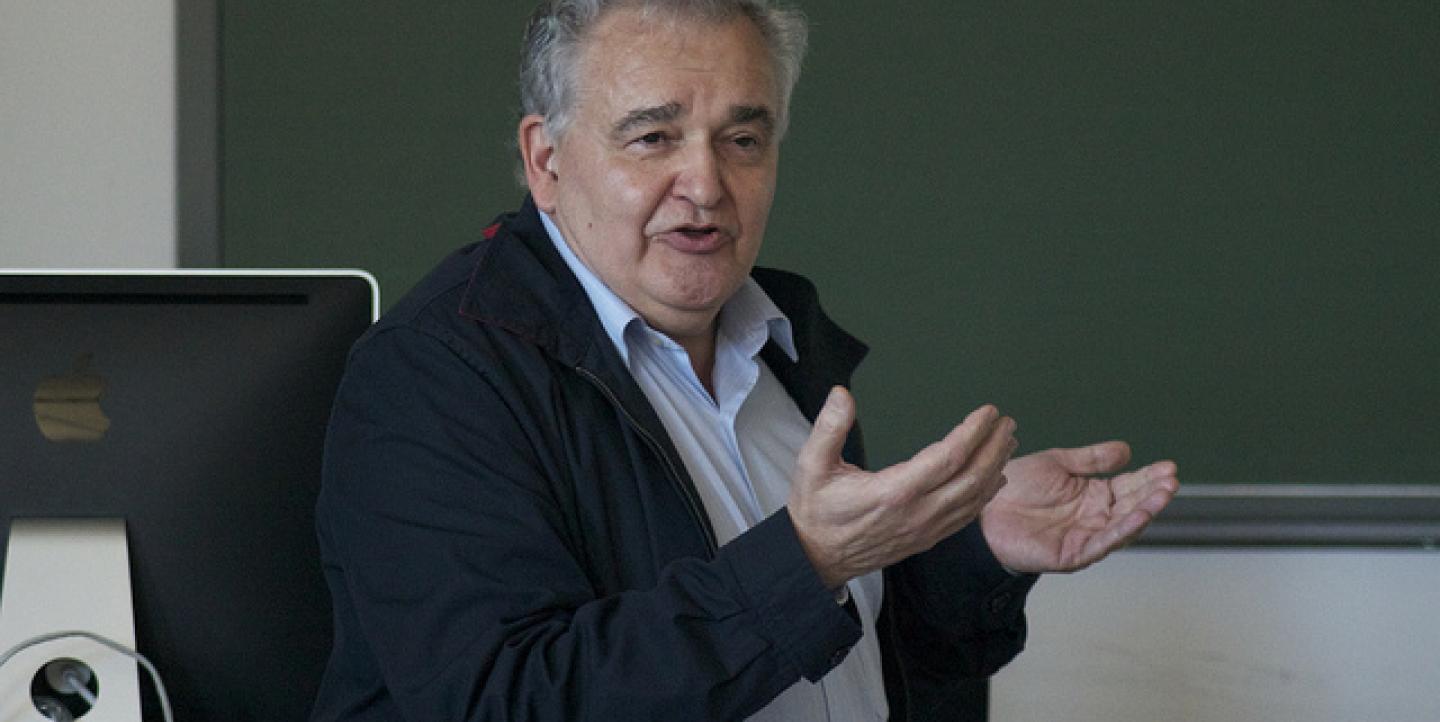Bernardo Diaz Nosty published a book last year that chronicled the sad history of the collapse of print media in the developed world over the past 70 years.
It wasn't bad enough that revenues had tanked and readers had fled, he said. The worst part was that news media had lost their credibility. Being the optimist that he is, he believes that credibility can be recovered by a return to the ethical principles of high-quality journalism.
The importance of ethics to the future of journalism has lately become a theme developed by many, including the French journalist Jean-François Fogel.
Diaz Nosty is head of the journalism department at the University of Malaga in Spain, and author of the book, "La Prensa en el Nuevo Ecosistema Informativo: Que Paren Las Rotativas." (The title's English translation is "The Press in the New Information Ecosystem: Stop the Presses.") It's available for free as a PDF from the publisher, Fundacion Telefonica). I heard him talk at Tecnologico de Monterrey in Mexico as part of a press tour of Latin America promoting the book.
Toward a more ethical journalism
Most of the book recounts the sad story of the decline of print news media in the U.S. and Europe. He attributes part of the decline in credibility to the explosion of sensationalistic digital media that inundate the web with all kinds of disinformation, defamation, lies and garbage.
No surprise, sensationalism sells, which presents problems for media outlets whose brands are synonymous with high quality and credibility. All the media suffer by being painted with the same brush.
On the other side of this trend, the Internet gives the public access to the documents (government reports, studies, investigations) that previously were interepreted and accessed only by the press and other insiders, he says.
Now the public has the power to make its own judgments on issues and how the press is covering them. The public can be a critical and corrective force on the news media, he says. Ordinary citizens can contribute to the news with photos, videos, and firsthand reports -- in real time.
Diaz Nosty sees social media as helping set the public agenda for the first time rather than leaving it to the politicians and the press. In this sense, the people are pushing the press to report on social problems from a bottom-up perspective -- more ethical, in his view.
Both of these forces are pushing journalists to distinguish themselves from all the other voices on the Internet by practicing their "civic calling" of producing news that is more accurate (rather than faster) and unbiased (independent of special interests).
A more relevant press
In the future, new digital media organizations with a handful of journalists will be able to focus on journalism that is more relevant to the public by interacting with them, listening to them and writing about their concerns, he says. There is no better example of this impact of new digital tools on the media and on society than the Arab Spring.
These new digital media that are emerging are more agile, unencumbered by the high costs of printing and distribution. Most of them focus on niche markets, defined either by geography (a region, a neighborhood) or a topic (environment, education).
A graphic presented in the book predicts when print news media will come to an end in dozens of countries -- 2017 for the U.S., for example, and 2024 for Spain.
Diaz Nosty closes with a poetic lament for the passing: "the nightly chorus of thousands of machines, announcing today what happened yesterday, will continue fading away."
This post originally appeared on the blog News Entrepreneurs. It is published on IJNet with the author's permission.
James Breiner is a consultant in online journalism and leadership. He is a former co-director of the Global Business Journalism Program at Tsinghua University and a former ICFJ Knight International Journalism Fellow who launched and directed the Center for Digital Journalism at the University of Guadalajara. He is bilingual in Spanish and English. You can follow him on Twitter here.
Image CC-licensed on Flickr via Rocío Hirschfeld.

